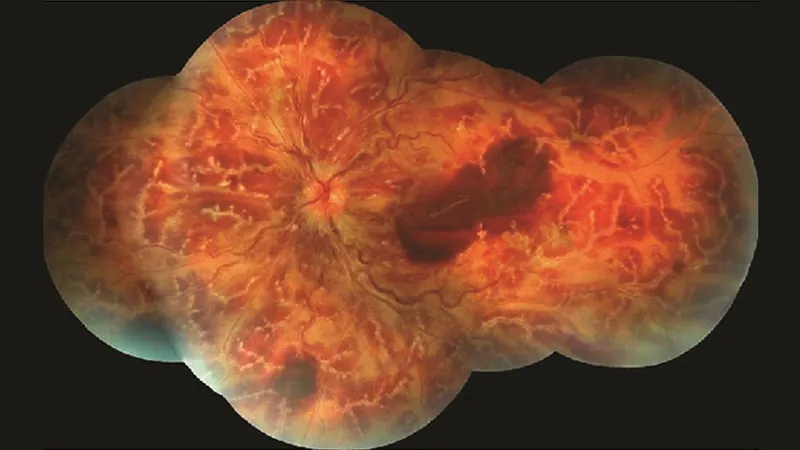
Unveiling the Cosmic Origins of Life: Organic Molecules Discovered Throughout the Universe
2024-12-26
Author: John Tan
The Wealth of Organic Molecules in Our Solar System
Research shows that organic molecules have been detected across various celestial bodies within our solar system. The European Giotto spacecraft first set the stage for this exploration in 1986 when it performed an in-situ analysis of comet 1P/Halley. This encounter revealed an unexpected wealth of organic species in the comet's coma, igniting curiosity about their origins.
Fast forward to 2015, when the Rosetta spacecraft made history by becoming the first to orbit and land on a comet, 67P. Rosetta’s analysis uncovered simple organic compounds, including glycine, which serves as a crucial building block for proteins. By 2022, researchers utilizing high-resolution mass spectrometry data from Rosetta identified an astonishing 44 organic compounds in just one day of data collection.
Dr. Nora Hänni from the University of Bern emphasized Rosetta's transformative impact on our understanding of these celestial bodies, with her team identifying dimethyl sulfide—a gas on Earth associated with biological processes, further deepening the connection between organic chemistry and the potential for life.
Asteroids: Ancient Harbingers of Life?
Robotic missions like Japan's Hayabusa2 and NASA's OSIRIS-REx have significantly contributed to the field by collecting samples from the asteroids Ryugu and Bennu. Initial assessments revealed a diverse range of organic materials in these stellar relics. Studying Ryugu enabled scientists to catalogue at least 20,000 carbon-based compounds, including 15 distinct amino acids, essential components for life as we know it.
Notably, these organic-rich asteroids might predate the formation of planets themselves, leading to intriguing speculations about their origin. Questions abound as to whether these organic materials formed in the frigid, dark clouds between stars or in energetic environments surrounding nascent suns.
Cosmic Chemistry: Building Complexity in Space
Amazingly, polycyclic aromatic hydrocarbons (PAHs) have been traced back to as early as 1.5 billion years following the Big Bang, illuminating the intricate chemistry taking place in the universe. The formation of carbon structures often occurs in the turbulent outflows of dying stars, hinting that the building blocks of life have a long and sophisticated history within the cosmos.
In molecular clouds, primordial elements collide on cold dust grains, forming essential molecules like methane. Over eons, ultraviolet radiation and cosmic rays break down these molecules into simpler forms, allowing for complex recombinations that could produce everything from methanol to amino acids.
The Future of Cosmic Exploration
As we look to the stars, ambitious missions such as NASA's Europa Clipper, the European Space Agency's Juice, and an innovative rotorcraft destined for Saturn’s moon Titan are set to delve deeper into the mysteries surrounding organic compounds in space. These ventures aim to detect potential biosignatures within icy crusts, drawing us closer to answering one of humanity’s most profound questions: are we truly alone in the universe?
The ongoing exploration of organic molecules may unlock the secrets of not just our planetary origins but also the potential for life on other worlds. As researchers continue to make strides in understanding these cosmic compounds, the dream of uncovering the origins of life remains ever tantalizingly within reach.


 Brasil (PT)
Brasil (PT)
 Canada (EN)
Canada (EN)
 Chile (ES)
Chile (ES)
 España (ES)
España (ES)
 France (FR)
France (FR)
 Hong Kong (EN)
Hong Kong (EN)
 Italia (IT)
Italia (IT)
 日本 (JA)
日本 (JA)
 Magyarország (HU)
Magyarország (HU)
 Norge (NO)
Norge (NO)
 Polska (PL)
Polska (PL)
 Schweiz (DE)
Schweiz (DE)
 Singapore (EN)
Singapore (EN)
 Sverige (SV)
Sverige (SV)
 Suomi (FI)
Suomi (FI)
 Türkiye (TR)
Türkiye (TR)